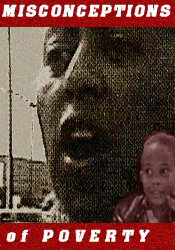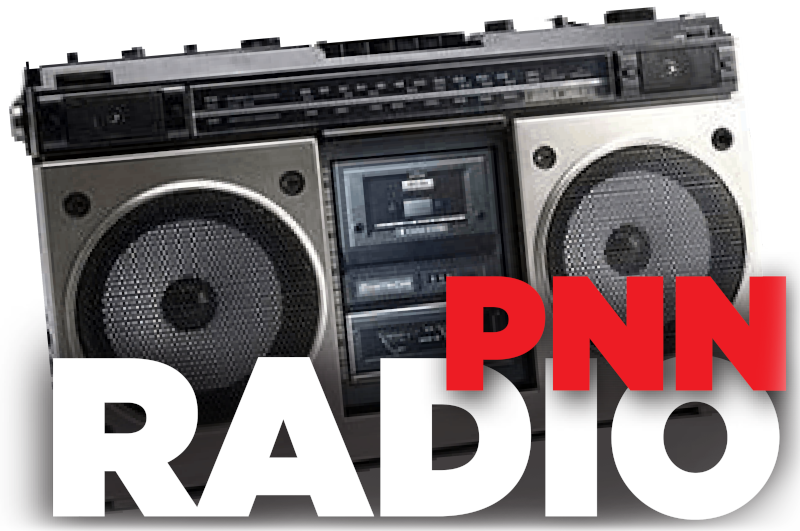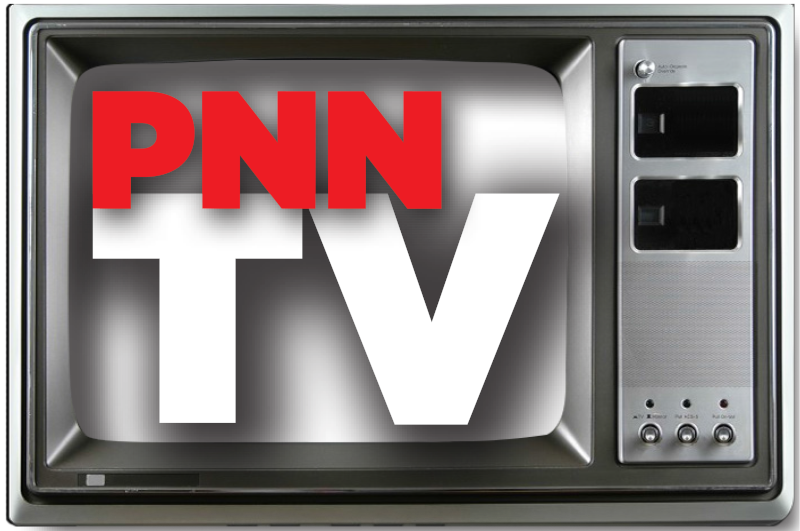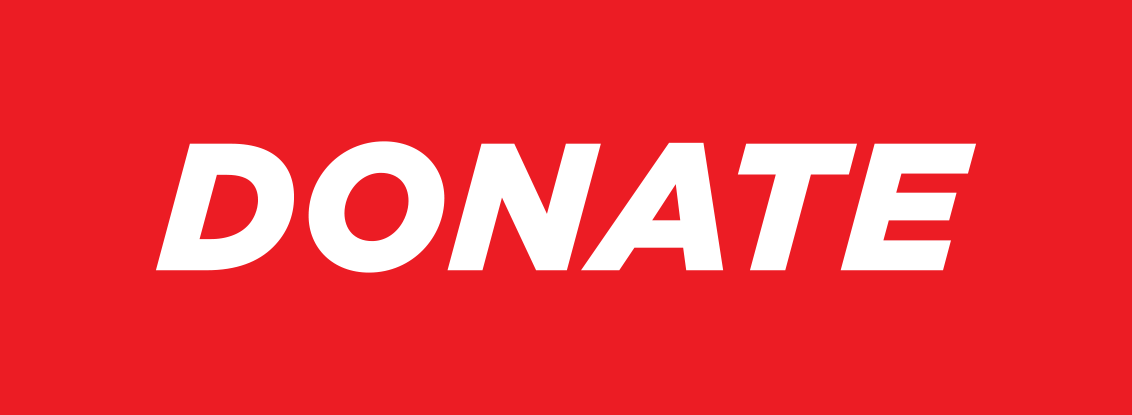The Womens Economic Agenda Project leads The Poor People’s Human Rights Campaign across country- organizing and educating poor folks in every city it reached.
 |
|
by Kaponda The underbrush that had cluttered the highway to desegregation was cleared by the apostles of the Civil Rights Movement. They plowed through the heartland of Jim Crow in a Greyhound bus. Those Freedom Rides of 1961 were driven by a 1946 Supreme Court ruling that struck down segregation as a violation of the United States Constitution. Violations of economic and human rights led to the fueling of the engine of another freedom bus in November of 2000. Throughout the country, and in the state of California, the Universal Declaration of Human Rights, an instrument certified by the United Nations and signed by the United States, had been trampled upon and treated with contempt. Many people in America had been lulled into believing that poverty was their lot in life. An organization with an 18-year history of fighting social injustices, the Women’s Economic Agenda Project (WEAP) was prepared to chart the movement to eliminate poverty. The meat and potatoes of the movement was the Freedom Bus Tour. It was modeled after the same Freedom Rides of the Civil Rights Movement. Many people were recruited in Oakland, California to travel as Freedom Riders to educate impoverished people through testimonials, teach-ins, presentations, speak-outs, panel discussions, videos, meetings, rallies, protests, marches and going door-to-door. The men, women and children who were recruited came from all walks of life but shared the philosophy that food, housing, health care, education and a living wage are basic economic rights for every person in the world, according to the Universal Declaration of Human Rights. The Social Justice Coordinator and one of the brain trust of WEAP, Blanche Mackey, discussed the myths about organizing poor people. ”I felt that getting together a group of poor people to go around the state was an amazing experience, because there is the stigma that poor people cannot be organized. We learned that we can be organized, and we can follow instructions.” The Freedom Bus Tour was essentially a school on wheels. The Freedom Riders, nearly 40 men, women and children, were educated about their own misconceptions of poverty through discussions and videos while traveling over 2,900 miles and 20 towns and cities m California. The jumping-off principle that was taught to everyone was that, “I do not deserve to live like this. I deserve a better life.” When that principle had begun to journey through the mind of each individual, they became much more effective during their interaction with people in other towns. From the unprovoked attacks on peaceful demonstrators in Birmingham, Alabama to the hundreds of thousands of tents set up by Freedom Riders on the Mall during their March on Washington, the Freedom Riders were united in their conviction to cast the spotlight on the glaring economic and human rights violations during their travels in the 1960’s. Not unlike the Freedoms Riders of the 1960’s, the Freedom Riders of 2000 traveled extensively, also. Their tour took them from Northern California, to Central California onto Southern California in order to drive home their message of hope to the hundreds of thousands of people whose humanities have been continually systematically stripped away. Each day, according to some of the accounts of the experiences of the Freedom Riders, a little more of the quality of the life of a poor person had been forgotten because “Many people in this country believed that the poor do not deserve a better life.” A story that was shared during the tour about a certain woman who saw a line full of people one day. The woman went to the end of the line because she thought that she was going to miss out on something. After waiting for a long time, she reached the front of the line only to realize that it was the line for men waiting to take a shower. The Freedom Riders’ tour was a very carefully thought-out process. Every conceivable eventuality had been thought over and over again. Diana Polson, the California Coordinator of WEAP, stated to me during an interview after I had asked her about the scope of poverty that is experienced by poor people in California and which of the many images she had seen had clung to her heart during the Freedom Ride? She continued by stating that, “There are so many people in this country who are suffering in silence and struggling in poverty.” “Entering into the Central Valley, the Freedom Riders met with union organizers, other Freedom fighters, migrant workers, members of the Green Party and churches. The many migrant workers we met with and talked to faced economic human rights abuses on a daily basis. Many companies flock to the Central Valley because they know there are a plethora of migrant workers who will work for little money. These migrant workers have their hands tied in numerous ways because they have so much fear of being reported to the authorities. They work for little money, in no-benefit jobs and in destitute circumstances, but cannot organize or demand anything better for fear of being deported. The owners of these companies and land have complete control over the lives of these workers, getting cheap labor and not having to live up to any standards. On many farms, owners will give workers little shacks to live in and charge them high prices for rent, so the migrant workers have no money left after a paycheck. Some people we talked to have been injured on the job, have contracted cancer due to working with pesticides in the fields and are left to suffer and die by these employers because they do not offer health insurance. The employers use migrant labor for their own benefit, with little thought about the well-being of the worker.” “We need to stop managing poverty and work towards eliminating it,” continued Polson. “That will happen by joining forces amongst poor and working people of all walks of life. It will happen when they come together to add what they can to this movement and educate themselves about the United Nations Declaration of Human Rights.” Not only did WEAP educate communities and towns about the UN Declaration of Human Rights, but also about the new movement of the Poor People’s Economic Human Rights Campaign (PPEHRC), created to address and shatter through education notions such as the poverty of people is directly proportionate to their failings. Also, the Just Health Care Campaign was the arm of the body that the Freedom Riders used to address the dire health care status in California. Fact sheets were handed out on the need to conduct Just Health Care training. Mackey stated that she felt the tour was a wonderful enlightenment for all of the people who were present, the people who were touched and the communities that were contacted. Mackey further stated that, “It has always been said that you can choose your friends, but you can’t choose your family, and we became a family on that bus.” Their camaraderie grew as they sang many songs along the route. “We Who Believe in Freedom” was a song that had been especially enjoyable by many of the 20 women Freedom Riders and a “Rich Man’s House” was an equally liked song by the other 10 children and 10 men. The Freedom Rider tour arrived in Los Angeles to an unprecedented 42,000 poor and homeless people who occupied the community known as Skid Row. That is the largest enclave of homeless people in America. The entire Freedom Ride Bus Tour documented over 500 economic human rights abuses. Seventeen Poor People’s Economic Human Rights Committees were established throughout the tour, and according to WEAP, the Freedom Ride Bus Tour 2000 was overwhelmingly successful. |



